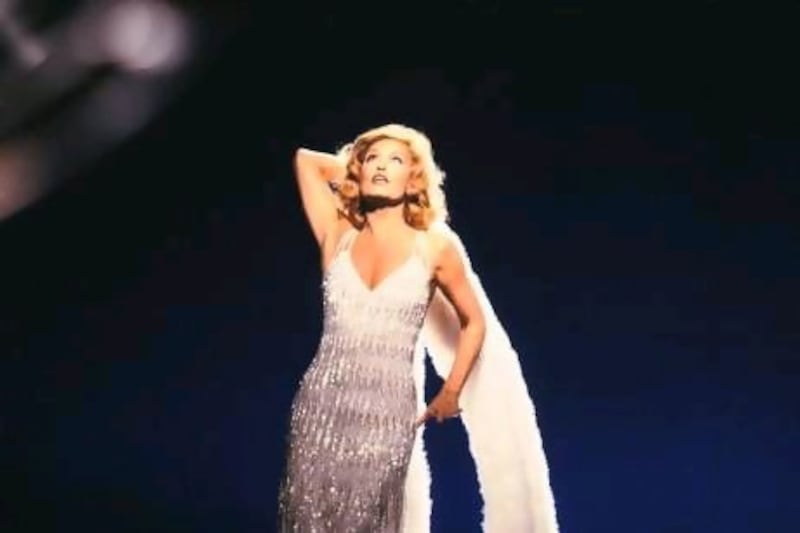Arabic pop is one of the many subgenres of Arabic music, and like some other Arabic musical forms, it freely borrows, pilfers and recycles other forms of music from both the East and West. Like western pop, the Arabic version is also aimed at the masses.
In the first of our eight-part series on music from the Arab world, we take a look at the genre's evolution.
The origins
Modern Arabic pop first emerged in Egypt around the mid-1950s when western music elements and formats started creeping into songs by classical Arab artists. Where in the 1940s songs by the legendary Egyptian songbird Um Kulthoum were measured in hours and movements, the first generation of pop artists such as Egypt's Abdel Halim Hafez adopted some of the jazz and cabaret elements similar to those used by his American counterpart Nat King Cole. The Egypt-based Italian singer and the model Dalida mixed European and disco music during the peak of her career in the 1970s and had hits in Arabic, English and French. By the early 1980s, artists such as Morocco's Samira Said emerged with her balanced blend of Arabic instrumentation and western melodies. From then on, popular Arabic songs increasingly became aligned with western formats, with shorter lengths and clearly defined verses and a chorus.
Sound and words
Because of the more elastic nature of the Arabian musical scale, Arabic pop songs are often found in the minor key, which may sound melancholy to western ears. Such a key sets up melodies that are often stirring and heavy on emotion. As a result, you will rarely find Arabic pop songs that sound "upbeat" in the form of, let's say, Walking on Sunshine by Katrina and The Waves. The sugary rush is delivered instead in the song's percussion and tempo. By taking its cues from traditional Arabic songs, melodies are concentrated among fewer notes, hence the trilling synonymous with Arabic singers. With explicit subjects deemed taboo by Arabs, Arabic pop songs tend to focus on romantic themes. However, more suggestive lyrics by the likes of Haifa Wehbi's hit single Leik Al Wawa and similar racy tracks by Nancy Ajram and Elissa skirted controversy and sold more records as a result.
The stars
With the axis of Arab pop-culture presently balanced between Egypt and Lebanon, the genre's biggest pop-stars at the moment hail from both countries. It is the women often leading the pack in terms of popularity because of their appearances in music clips, movies and on television, not to mention the dozens of endorsement deals ranging from soft drinks to property investments. The Lebanese pop-star Nancy Ajram continues to appeal to most age groups, with her early albums consisting of slick ballads before her recent foray into house music with 2010's Seven. Lebanon's Najwa Karam often uses elements of western pop such as synthesisers to freshen up what is a very traditional Lebanese folk sound. More experimentation can be found on the male front with Egypt's Mohamed Mounir and Amr Diab. For more than three decades, Mounir blended Arabic pop with blues, jazz and reggae. His philosophical lyrics and recent political stance against the former Mubarak regime in Egypt earned him rock-star status among young and old alike. Diab's restless muse allowed him to explore Mediterranean rhythms and Latin flavours such as Bossa Nova and flamenco.
Want to begin your Arabic pop collection? We've rounded up three albums that are widely available and will help you get the tunes rolling.
Kadim Al Sahir: Hafiat Al Kadamain (2003)
The Iraqi artist Kadim Al Sahir has keen admirers in both the Arab and Western world. His albums exhibit eclectic styles from classical Arabic and Iraqi folk to slick pop. Hafiat Al Kadamain was popular in the Middle East and includes the wonderful duet Stop the War with the English soprano Sarah Brightman.
Amr Diab: The Very Best of Amr Diab (2001)
With an imposing 25-year catalogue, this compilation serves as a great primer. The 14 tracks showcase Diab's great versatility, from soulful balladry in Ana Mahma Kibirt Sugheer to the flamenco tinged Amarain. Of course, there's also his signature tune Habibi. If you haven't heard it by now on car radios and in shopping malls, then you need to get out more.
Nancy Ajram: Betfakar Fi Eih (2008)
Ajram's sixth album was her most successful and even earned her a World Music Award, an achievement matched only by Amr Diab and Lebanon's Elissa. It was a simple formula: sing with verve the songs written by the best Arabic producers that money can buy.
Next week, stay tuned for our guide to Arabic hip-hop.






